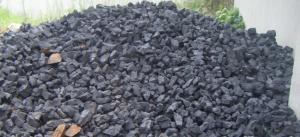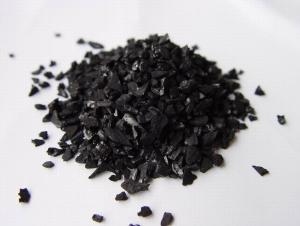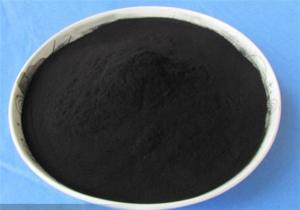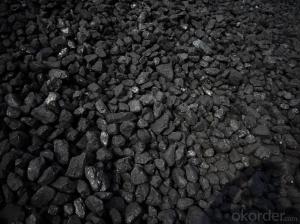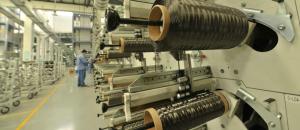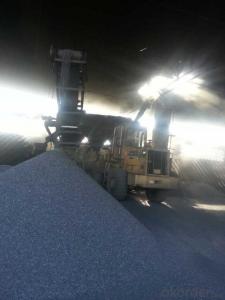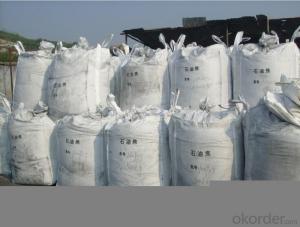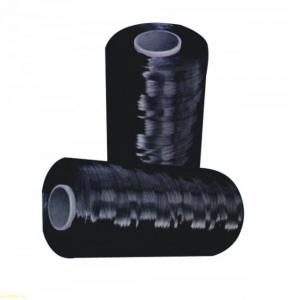Coal Based-granular Activated cCarbon for wWater Purification
- Loading Port:
- Tianjin
- Payment Terms:
- TT OR LC
- Min Order Qty:
- 1000 m.t.
- Supply Capability:
- 5000 m.t./month
OKorder Service Pledge
OKorder Financial Service
You Might Also Like
1.Structure of Anthracite Description
Anthracite is made from Shanxi,the coal capital of the word .The quality is very high due to its unique resource .It has been exported to most of the world ,especially to Japan and Korea,as well as mid east.
It is commonly used in drinking water ,food industry ,chemical /dyeing industry ,sea/salt water filtration ,petro-chemical industry ,pulp/paper industry ,sauna,spa,pool,boiler ,etc.
Advantages:
1. Longer Filter Runs2. Faster Filtration3. Long Lifetime4. Good Separation Characteristics5. Savings water and power in washing6.Removes more iron and manganese salts tration ,petrochemical industry ,pulp /paper industry ,sauna,spa,pool,boiler,etc.
2. Main Features of Anthracite
Fixed Carbon: 78 %
Ash: 18 %
Volatile Matter: 4 %
Sulphur: 1.0 %
Moisture: 11 %
Gross Calorific Value: 6450 Kcal
Size: 0 mm - 19 mm: 90%
3. The Images of Anthracite
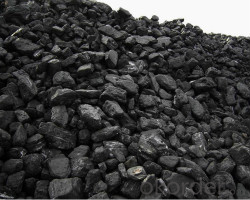

4. The Specification of Anthracite
1. Fixed carbon: 90%min
2.Uniform particles
3.Good separation characteristics
4. Long life
5. Widely used
6.activated anthracite:
7.Certificate: ISO9001, ISO9002, NSF
8.Usage: for water and air purification, etc.
5.FAQ of Anthracite
1). Q: Are you a factory or trading company?
A: We are a factory.
2). Q: Where is your factory located? How can I visit there?
A: Our factory is located in ShanXi, HeNan, China. You are warmly welcomed to visit us!
3). Q: How can I get some samples?
A: Please connect me for samples
4). Q: Can the price be cheaper?
A: Of course, you will be offered a good discount for big amount.
- Q: How does carbon affect the taste of food and beverages?
- Carbon, in the form of activated charcoal or carbonation, can significantly affect the taste of food and beverages. Activated charcoal is known for its ability to absorb impurities and toxins, making it a popular ingredient in various food and drink products. When added to food and beverages, activated charcoal can help remove unpleasant odors and flavors, resulting in a cleaner and more enjoyable taste. In terms of carbonation, it is widely used in beverages to create fizziness and enhance the overall sensory experience. Carbon dioxide gas is dissolved in liquids under pressure, which creates bubbles when the pressure is released, giving the drink a refreshing and effervescent quality. This carbonation effect can add a tangy or slightly acidic taste to the beverage, which is often considered pleasant and invigorating. Moreover, carbonation can also influence the taste of food. For example, the carbonation present in beer or sparkling wine can help cut through the richness of certain dishes, balancing flavors and providing a more refreshing palate cleanse. Carbonation can also be added to certain foods, such as bread or pastry dough, helping them rise and creating a lighter texture. It is important to note that while carbon can enhance the taste of food and beverages, its impact can vary depending on the specific application and concentration used. Additionally, the taste of carbon in food and beverages is subjective, and some people may prefer non-carbonated or charcoal-free options. Ultimately, the use of carbon in culinary applications offers a wide range of possibilities for taste enhancement and sensory experiences.
- Q: Benefits of reducing carbon emissions
- 2, slow down the greenhouse effect. 1) the increase of diseases and insect pests on the earth;2) sea-level rise;3) the climate is abnormal and the ocean storm is increasing;4) the land was dry and the desertification area increased.Scientists predict that if the earth's surface temperature at the present rate of progress, by 2050 the global temperature will rise 2 to 4 degrees Celsius, the polar ice will melt significantly, resulting in a significant rise in sea level, some island countries and coastal city will be submerged in the water, which consisted of several famous international City: New York Shanghai, Tokyo and Sydney.The greenhouse effect can threaten prehistoric human beings with deadly virusesU.S. scientists recently warned that due to rising global temperatures to the Arctic ice melt, frozen hundreds of thousands of years of prehistoric deadly virus may lead to a global epidemic delivered from oppression, panic, human lives are threatened.Syracuse University of New York scientists in the latest issue of "scientists" magazine pointed out earlier, they found a plant virus TOMV, the virus spread widely in the atmosphere that has its traces in the Arctic ice.
- Q: How about Zonta carbon technology
- The factory garbage to death, wages do not rise, but down, quarterly awards fell by more than half, production targets set very high, employees can not reach the goal, not to work overtime. This is a company's way of restricting employees to work overtime. And so on, the target production has been added, so never meet the requirements, overtime do not think. A large piece of employee turnover now
- Q: What is carbon nanotechnology?
- Carbon nanotechnology is a branch of science and engineering that focuses on the manipulation and study of materials at the nanoscale using carbon-based materials, such as carbon nanotubes and graphene. Nanotechnology, in general, deals with structures and devices at the nanometer scale, which is about 1 to 100 nanometers in size. Carbon nanotechnology takes advantage of the unique properties of carbon to create and control nanostructures with exceptional mechanical, electrical, and chemical properties. Carbon nanotubes, for example, are cylindrical structures made of carbon atoms arranged in a hexagonal lattice. They have remarkable strength, thermal conductivity, and electrical properties due to their unique structure. Carbon nanotubes can be used in a wide range of applications, such as electronics, energy storage, and materials science. They hold great promise for creating stronger and lighter materials, more efficient batteries, and faster and smaller electronic devices. Graphene, another carbon-based material, is a single layer of carbon atoms arranged in a hexagonal lattice. It is known for its exceptional strength, electrical conductivity, and thermal conductivity. Graphene has the potential to revolutionize various industries, including electronics, medicine, and energy. Its properties make it a promising candidate for flexible electronics, high-performance batteries, and even drug delivery systems. Carbon nanotechnology also involves the development of methods to synthesize and manipulate carbon-based nanostructures. Researchers use various techniques like chemical vapor deposition, laser ablation, and molecular self-assembly to create nanoscale carbon materials. These techniques allow for precise control over the size, shape, and properties of the nanostructures, enabling the design of materials with tailored properties for specific applications. In summary, carbon nanotechnology is a field that explores the unique properties and applications of carbon-based materials at the nanoscale. It holds immense potential for revolutionizing various industries and creating new technologies that could benefit society in numerous ways.
- Q: What is the symbol for carbon?
- The symbol for carbon is C.
- Q: How does carbon impact the prevalence of avalanches?
- Carbon has a significant impact on the prevalence of avalanches. The increase in carbon emissions and subsequent global warming is leading to changes in snowpack stability, which in turn affects avalanche frequency and severity. As temperatures rise, snowfall patterns are becoming more unpredictable, with more frequent freeze-thaw cycles. This creates a weaker snowpack as the snow becomes less cohesive and more prone to sliding. Additionally, warmer temperatures cause more rain to fall instead of snow, further destabilizing the snowpack by adding weight and reducing its strength. These changes in snowpack stability increase the likelihood of avalanches occurring. Moreover, climate change also affects the timing and duration of snow accumulation. With warmer temperatures, snow melt occurs earlier, which can lead to a reduced snowpack during the peak avalanche season. This can result in a higher likelihood of triggering avalanches, as there may be a smaller buffer of stable snow to support the weight and stress of additional snowfall or human activity. Furthermore, carbon-induced climate change can alter the frequency and intensity of extreme weather events, such as heavy snowfalls or rainstorms. These events can cause rapid and significant changes in snowpack conditions, leading to an increased risk of avalanches. In summary, the impact of carbon on the prevalence of avalanches is significant. The warming climate affects snowpack stability, timing and duration of snow accumulation, and the frequency of extreme weather events, all of which contribute to an increased risk and prevalence of avalanches.
- Q: What is the atomic number of carbon?
- The atomic number of carbon is 6.
- Q: Organic matter is converted from organic carbon. Why is humus represented by carbon instead of converted?
- However, humus is an important part of soil organic matter, is formed by the decomposition of organic matter in the soil, is a black amorphous organic colloid. Humus is organic polymer compound with colloidal acid, high content of nitrogen. The humus must be organic carbon content, and with the soil humus carbon content was positively correlated.Humus is a kind of soil organic matter, while soil organic matter also contains fresh organic matter and partially decomposed organic matter
- Q: What is the role of carbon in the human body?
- Carbon plays a critical role in the human body as an essential element for all organic molecules, serving as the backbone for many biomolecules including carbohydrates, lipids, proteins, and nucleic acids, which are vital for various physiological processes. To begin with, carbohydrates, being the primary source of energy for the body, heavily depend on carbon. Glucose, a simple sugar consisting of carbon, hydrogen, and oxygen, undergoes cellular respiration within cells to release energy. Complex carbohydrates like glycogen, which are stored in the liver and muscles as an energy reserve, also rely on carbon for their structural composition. Moving on, lipids such as fats and oils contain carbon and serve multiple purposes including energy provision, insulation, and organ protection. Carbon atoms form long hydrocarbon chains in lipids, making them hydrophobic and enabling efficient energy storage and release. Lipids also play a crucial role in cell membrane structure and hormone production. Additionally, carbon is a fundamental component of proteins, which participate in almost all cellular processes. Proteins consist of amino acids, with carbon atoms forming the backbone of these amino acids, providing stability and flexibility to the protein structure. Carbon also contributes to the formation of peptide bonds, which connect amino acids to build proteins. Proteins are necessary for functions such as enzyme catalysis, molecule transport and storage, immune response, and cell signaling. Lastly, carbon is an indispensable element in nucleic acids such as DNA and RNA, which contain genetic information. Carbon atoms create the sugar-phosphate backbone of nucleic acids, ensuring structural stability. DNA carries hereditary information, while RNA plays a vital role in protein synthesis. In conclusion, carbon is crucial in the human body as it forms the foundation of organic molecules like carbohydrates, lipids, proteins, and nucleic acids. Its versatility and ability to form stable bonds allow for the diverse functions and structures necessary for life processes.
- Q: What are the different types of carbon-based concrete additives?
- Concrete can be enhanced and improved by incorporating various types of carbon-based additives. These additives, derived primarily from carbon-based materials, can be categorized into three main types: carbon nanotubes, graphene, and carbon fibers. 1. Carbon Nanotubes: These cylindrical structures consist of carbon atoms arranged in a distinct hexagonal pattern. They possess exceptional mechanical and electrical properties, making them highly sought-after as concrete additives. By adding carbon nanotubes to concrete, its strength, durability, and toughness can be improved. Additionally, these nanotubes enhance the electrical conductivity of concrete, which proves advantageous for applications such as self-healing concrete and anti-static flooring. 2. Graphene: Graphene is a two-dimensional lattice composed of a single layer of carbon atoms. It is renowned for its remarkable strength, high electrical conductivity, and excellent barrier properties. When incorporated into concrete, graphene significantly enhances its mechanical properties, including compressive strength, flexural strength, and resistance to abrasion. It also improves the durability and impermeability of concrete, providing resistance against water and chemical penetration. 3. Carbon Fibers: Carbon fibers are elongated and slender strands derived from organic polymers like polyacrylonitrile or pitch. They possess exceptional tensile strength and are commonly used as reinforcements in various construction materials, including concrete. The addition of carbon fibers to concrete enhances its flexural strength, resistance to impacts, and behavior when subjected to cracks. Furthermore, carbon fibers improve the ductility and toughness of concrete, making it more resistant to dynamic loads. It is important to note that each type of carbon-based concrete additive offers unique advantages and applications. Carbon nanotubes provide exceptional mechanical and electrical properties, graphene enhances strength and barrier properties, while carbon fibers strengthen flexural strength and impact resistance. The choice of additive depends on the specific requirements of the concrete application and the desired performance characteristics.
Send your message to us
Coal Based-granular Activated cCarbon for wWater Purification
- Loading Port:
- Tianjin
- Payment Terms:
- TT OR LC
- Min Order Qty:
- 1000 m.t.
- Supply Capability:
- 5000 m.t./month
OKorder Service Pledge
OKorder Financial Service
Similar products
Hot products
Hot Searches
Related keywords
